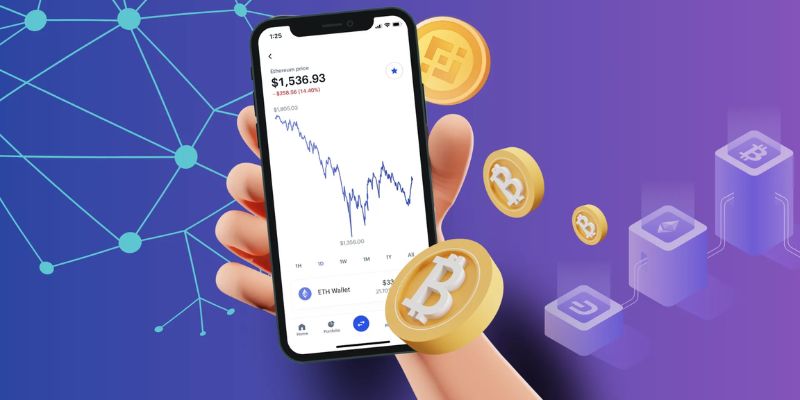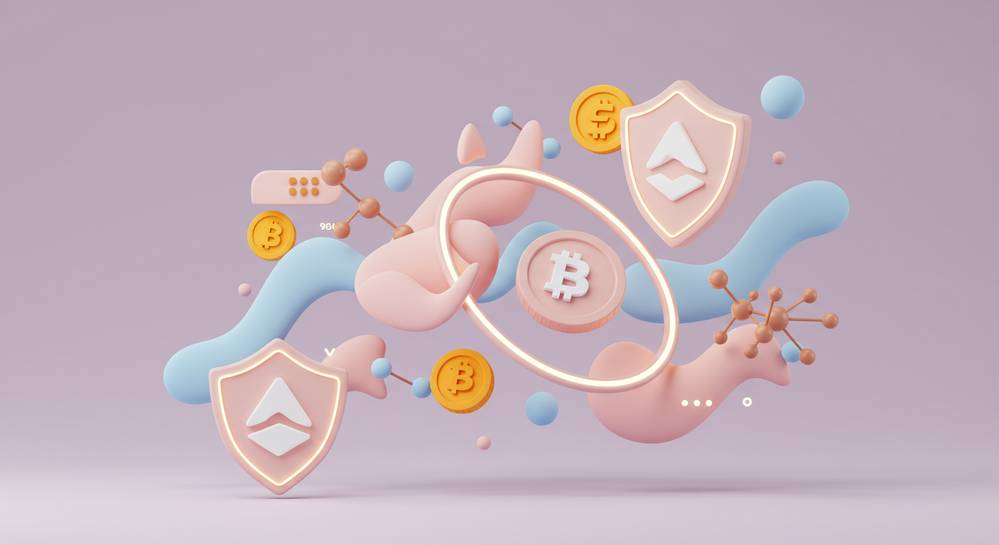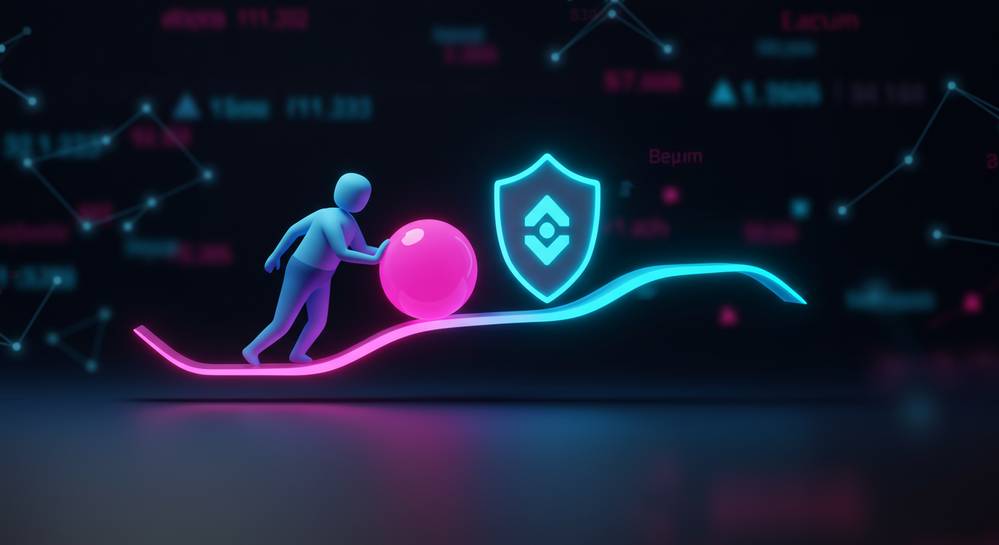Dive into the world of digital currency and let me guide you through the must-knows of a Crypto wallet setup guide for beginners. We’re breaking it down into simple steps, starting with the basics of cryptocurrency wallets. From choosing the right type to securing it like a vault, you’ll learn it all. Whether you’re looking at hot or cold wallets, I’ve got the lowdown to make the setup process a breeze. Get ready to secure your digital fortunes with ease and confidence.
Understanding the Basics of Cryptocurrency Wallets
What Is a Cryptocurrency Wallet?
A cryptocurrency wallet is like a safe for your digital money. It stores your crypto and keeps it secure. The wallet has special keys: one public, one private. The public key is like an address that others can see. It’s where people send you crypto. The private key is secret, like a PIN to an ATM. It opens your wallet, so you must keep it safe.
When setting up your wallet, you create these keys. They make sure your crypto belongs to you and no one else. Funding your new wallet comes next. It’s simply sending crypto to your public address.
After this, securing your wallet is vital. Strong passwords, wallet encryption, and backups help greatly. They shield your crypto from theft and loss.
Understanding your wallet, the setup, and its safety are key steps. With this knowledge, you can begin using crypto with confidence.
Hot vs Cold Wallet Differences
Let’s compare hot and cold wallets. First comes the hot wallet. It’s online and always ready. You can do transactions fast. Yet, the internet connection can make it less safe. It’s a trade-off between easy access and higher risk.
On the other side, cold wallets are much safer. They’re not connected to the internet. Think of them like a vault. Safe, but not as quick to access. They’re great for holding crypto you don’t plan to spend soon.
So, choosing between the two depends on how you use your crypto. Need to trade often? A hot wallet fits well. Want long-term storage? Cold wallet’s your match.
Remember, your choice impacts how you safeguard your assets. Pick the one that suits your needs to manage your digital fortunes safely.

Choosing the Right Wallet for Your Needs
Hardware Wallet Setup Process
Picking the right wallet is crucial to keep your crypto safe. Imagine different wallets like homes for your digital money. A hardware wallet is like a safe in your house. It keeps your crypto locked away and offline, far from hackers. To set up a hardware wallet, first, you need to buy one. Names like Ledger or Trezor might ring a bell; these are popular options. Once you have it, plug it into your computer. Then, install the software that comes with it or from the maker’s site.
Next, follow the step-by-step guide. It walks you through creating a new wallet and securing it. The wallet will make a new set of keys just for you. Think of these keys as the keys to your safe. Then, write down the seed phrase it gives you. This phrase can bring your wallet back if you lose it, so keep it safe! To finish up, set a strong password on your wallet. Now, no one can get into it without your okay. At last, to add money to your wallet, you copy your wallet address and use it in a transfer.
Mobile and Desktop Wallet Advantages
Now let’s talk about mobile and desktop wallets. They’re pretty handy, like having a wallet in your pocket or on your desk. These wallets are easy to use and good for everyday crypto moves like buying things or trading. To start with a mobile wallet, download a wallet app to your phone. For desktop wallets, download wallet software to your computer. Both kinds give you a step-by-step setup too. They make new keys for you as well and have you write down a seed phrase.
Mobile wallets have a cool feature: QR codes. They make sending and getting crypto super quick. You just scan the code, no need to type out long addresses. Desktop wallets are good because they can handle more kinds of crypto. They also have more space for added security features. After setting up, back up your new wallet to keep it safe. This means copying down key info and storing it securely.
Both wallet types need strong passwords and, if you can, add an extra step to log in, like a finger scan or a code from an app. This is called multi-factor authentication. It’s like having a double lock on your door. Lastly, always keep your wallet app or software updated. This keeps your digital home strong against intruders.
Choosing the right wallet is all about how you use your crypto. If you need the best security, go for hardware. If you want easy access and use it a lot, try mobile or desktop wallets. Think about what you need, and pick the one that fits you best. Then, follow the steps to make your crypto safe and sound.

Securing Your Wallet
Setting Strong Wallet Passwords and Multi-Factor Authentication
When you create a crypto wallet, think of it as your digital bank. Just like you wouldn’t use “password” to protect your life savings, don’t pick a weak password for your wallet. You need a strong one. What’s a strong password? It’s long, unique, and a mix of letters, numbers, and symbols. No birthdays or “1234.”
Now, add another lock on your digital treasure chest. This is where multi-factor authentication (MFA) comes in. MFA asks for two proofs before you get in. It’s like a club that needs a password and a secret handshake. It could be a text to your phone or a code from an app.
Think you’re done? Not quite. Your wallet needs updates, just like your phone does. These updates fix holes that hackers could sneak through. Make checking for updates part of your routine, like charging your phone.
Understanding Wallet Seed Phrases and Backup Procedures
Let’s talk about seed phrases. Imagine if you lost your wallet. In the real world, it’s gone. But in crypto, there’s hope. That hope is your seed phrase. It’s a list of words that act like a magic spell. When you say them to a new wallet, your money comes back.
Keep that phrase safe. Don’t tell it to anyone. Write it down and store it like a rare comic book or grandma’s jewelry. Some people lock it away or hide it in secret places.
Backing up your wallet is like taking a photo of your money. If something goes wrong, you use that ‘photo’ to get your money back. Make copies. Store them safe, apart from your wallet. Think fire, flood, or theft. You want a backup that survives all that.
Remember, your crypto wallet is not just an app. It’s your personal vault. You wouldn’t give just anyone your vault key. So don’t slack off on your wallet’s defenses. Strong passwords, MFA, updates, and backups are your armor in the digital world. Wear it well.
Performing Transactions and Wallet Maintenance
Sending and Receiving Crypto – A Step by Step Guide
Sending and receiving crypto can seem daunting at first. But, it’s pretty simple once you know the steps. Let’s start with how you send crypto. First, log in to your wallet. Then, find the send feature. Next, enter the receiver’s wallet address. Always double-check this address! Now, enter the amount you want to send. Remember to check transaction fees so you don’t get surprised. Finally, confirm the details and send. Your crypto is on its way!
Receiving crypto is easier. You just share your wallet address. Copy it from your wallet. Send it to the person giving you crypto. They’ll follow the steps above to send crypto to you. Check your wallet later, and you’ll see your new digital fortune.
Maintaining Your Wallet’s Security and Updating Software Regularly
Keeping your wallet safe is a big deal. First, always use strong passwords. They should be long and have various characters, like numbers and symbols. Don’t use easy-to-guess stuff, like your pet’s name. Use multi-factor authentication too. This adds an extra security step when you log in. It might be a code sent to your phone, for example.
Software updates are also key. Wallet creators regularly improve security. They fix any weak spots found in their software. So, updating means you get the latest and best protection. It’s like getting stronger armor for your digital treasure. Remember, a well-maintained wallet is a happy wallet.
Keeping your crypto safe is like taking care of a garden. Do the right steps and you’ll see it grow safely. Don’t worry; you’ve got this. Just follow the steps, keep learning, and your digital coins will stay secure.
In this post, we dug into the world of cryptocurrency wallets. You now know these wallets are vital for handling your crypto. We covered hot wallets that stay online, and cold wallets that keep your crypto offline. Each has its benefits and you picked the one that’s right for you. Setting up a hardware wallet takes a few steps but ensures safety. Mobile and desktop wallets, on the other hand, bring ease and quick access.
We can’t stress enough the importance of securing your wallet. Strong passwords and extra layers of security like multi-factor authentication are a must. Remember, your wallet’s seed phrase is the key to your crypto kingdom – protect it well. Back these details up to avoid losing your coins if something goes wrong.
Finally, we walked through safely sending and getting crypto and keeping your wallet’s security tight by updating its software.
Smart choices and regular maintenance make sure your digital wealth stays safe in the wild world of crypto. Stick to these steps and you’ll be a crypto pro in no time. Keep learning, stay safe, and dive into the digital currency adventure with confidence.

Q&A :
How Do I Set Up a Crypto Wallet as a Beginner?
Setting up a cryptocurrency wallet as a beginner involves a few careful steps. First, you need to choose the type of wallet you want: hardware, software, or paper. Then, select a reputable provider or wallet service. Next, you should download the necessary application or purchase the hardware device. After that, follow the instructions to create your wallet, which usually involves setting up security features like a strong password and backup recovery phrase. Lastly, ensure your wallet is secure by storing your recovery phrase offline and considering additional security measures like two-factor authentication.
What are the Different Types of Cryptocurrency Wallets?
There are several types of cryptocurrency wallets each offering different levels of security and accessibility. The primary types include:
- Hardware wallets: Physical devices that store private keys offline.
- Software wallets: Digital wallets that can be web-based, desktop, or mobile.
- Paper wallets: Physical documents that contain a public address for receiving and a private key for spending cryptocurrencies.
- Custodial wallets: Wallets where the private keys are held by a third party, like on an exchange.
- Non-custodial wallets: Wallets where you have complete control over your keys.
What Safety Precautions Should I Take with My New Crypto Wallet?
To keep your new crypto wallet safe, you should:
- Use a strong, unique password for wallet access.
- Write down your recovery phrase and store it in a secure, offline location.
- Avoid sharing your private keys or recovery phrase with anyone.
- Consider using multi-signature and two-factor authentication features.
- Keep your wallet software updated to the latest version.
- Be wary of phishing websites and never enter your wallet details on suspicious sites.
Can I Set Up More Than One Crypto Wallet?
Yes, you can set up multiple crypto wallets for different purposes or to manage different types of cryptocurrencies. Some users do this for increased security, to take advantage of specific wallet features, or to segregate their investment and daily transaction cryptocurrencies. Just ensure that you follow the security measures for each wallet setup.
What Should I Do If I Lose Access to My Crypto Wallet?
If you lose access to your crypto wallet:
- Try recovering your wallet using the recovery phrase you should have stored securely when you set it up.
- If you’re using a hardware wallet, check if the manufacturer offers a recovery service.
- For software wallets, check if there’s a ‘forgot password’ option, but be prepared to provide your recovery phrase.
- If you still can’t regain access, reach out to the wallet provider’s customer support for assistance.
- As a last resort, and if you have significant funds at stake, consider seeking professional data recovery services or a blockchain forensic service.



